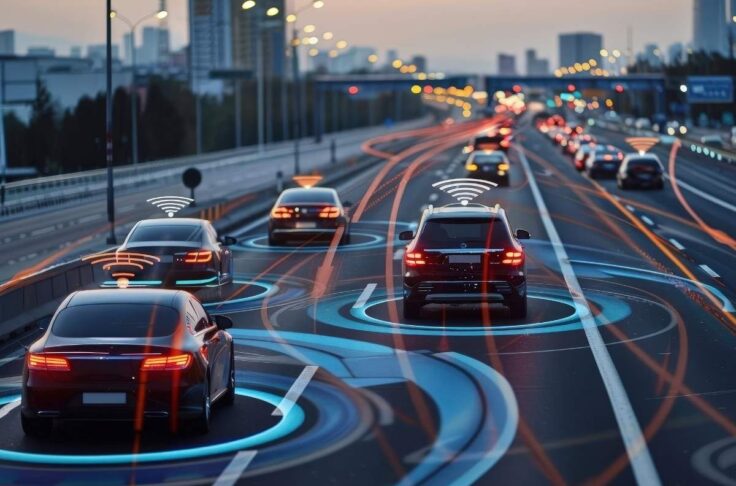Keyless Entry for Carsharing: Everything You Need To Know

Key management can be time-consuming and complicated for many shared mobility operators. As your fleet grows, so does the complexity of handling hundreds of keys. Renters or employees losing keys can also disrupt your rental process as they misplace, lose or leave keys behind in the vehicle.
There’s nothing worse for operators than the rental that never happened.
Keyless entry is the new standard for all new cars, allowing remote opening and starting using a key remote. Your customers are used to not needing physical keys to lock and unlock and start their vehicles.
With a keyless system, you could save time on key management, offer your customers a better experience through a simplified rental process, and attract more clients.
This article will introduce you to keyless entry for carsharing. Here are the topics we will cover:
5 Reasons Why You Should Have Keyless Entry for Your Carsharing Business
Different business models in carsharing have varying requirements, so there is no one-size-fits-all reason for incorporating a keyless entry system into your fleet.
To determine if keyless entry is the right solution for you, consider your business model, the full range and size of your fleet, and the technical aspects of your rental process.
Here are five reasons why you should consider keyless entry as an option for your carsharing business:
1. Eliminate Key Management Headaches
Managing all the keys in your fleet can be a huge challenge. The larger your fleet, the more keys you have to handle, increasing the need for organization.
Your keys change hands frequently throughout the rental process, posing the risk of key loss. Replacing a lost key can be time-consuming and costly. Having a new key made by the dealership or manufacturer and then program it to the vehicle can cost up to €200.
Keyless entry eliminates the hassle of key management. Keys are left inside the vehicle; bladed keys can be attached to a key fob and placed inside a fob reader, while key remotes can be disassembled and connected to a smartkey module wired to the car. Both methods allow a telematics system to remotely unlock cars and enable customers to access vehicles. Depending on the carsharing telematics used, you can even offer customers the option to unlock the vehicle using their smartphones.
The result? You save time, effort, and money by avoiding lost keys. No more storing dozens of keys in a safe or maintaining lengthy key logs.
2. Customers Return More Frequently to Use Your Service
Customers don’t want to wait at a counter, they want to grab their vehicles and go as quickly and hassle-free as possible.
With keyless entry for fleets, your customers can skip the line at the counter. Since the key is already in the vehicle, they can confirm the rental, hop in the car, and drive away.
Through telematics, you can digitize and fully automate keyless car sharing, allowing customers to rent your vehicles on short notice, regardless of station opening hours.
There is a high demand for on-demand vehicles in densely populated areas. Offering a convenient and keyless service will leave a lasting impression on your customers, encouraging them to use your service again.
3. Your Vehicles Stay On The Road Longer and Generate Revenue
Investments into acquiring new vehicles for your fleet are expensive. At the same time, you want to generate the highest possible return on investment from the investments you make. To maximize revenue and optimize fleet management, operators are looking to maximize fleet utilization.
While some traditional car rentals are already operating 24/7, most of them are only renting out vehicles during business hours. Every vehicle standing still on the parking lot is an opportunity cost for missed revenue.
Keyless entry for car sharing enables your vehicles to be on the road 24/7, outside of regular maintenance and repair appointments. It frees operators from key handovers, allowing your vehicles to remain on the road for longer. This leads to higher rental frequency, increased fleet utilization, and more revenue for your business.
For your customers, this means added convenience, as they can rent a vehicle for an evening dinner, enjoy the night out, and return the vehicle to the station at night, all automatically.
4. Flexible Drop-Off Options to Your Customers
Depending on whether you are in traditional car rental or in station-based carsharing, handing over a key often requires returning it to a fixed, predetermined location, which can be inconvenient enough for customers to keep them from renting from you.
A keyless entry system allows you to digitize and automate your rental process, providing customers with flexible drop-off options.
Customers can visit one of your stations with zero notice, select a vehicle on-site, book it through their smartphone, and drive away. You can offer them the flexibility to drop off their vehicle at a station of their choice and end the rental via smartphone too.
Offering flexibility is not only possible with the drop-off location, but also with the rental period. Flinkster is a prime example of an operator offering flexibility during rental periods. If a customer wants to extend the rental, they will be able to do so via the Flinkster Smartphone app. In situations where the customer wants to end the rental early, Flinkster offers the option to end the rental period early with a 50% credit towards their account.
5. Save on Staffing Costs
Staffing your station counters comes at a high cost. Labor is a big cost that gets passed on to your customers. At the same time, you operate in a price-sensitive market.
Customers compare prices online and look for the best deals. High staffing costs therefore make it challenging for you to offer competitive prices and maintain your profit margin.
Keyless entry eliminates the need for personnel to manage the key handover for the right vehicle and return process at the counter. By eliminating this manual task, you can digitize your rental process and save on staffing costs. If personal interactions are crucial for your customer retention, for example in areas where people prefer in-person bookings, you can still benefit from keyless entry for fleets in the vehicle handover process.
In regions with high digital demand, you can automate the process while offering in-person services in local areas with higher demand for counters. This allows you to maintain a customer-centric approach on-site, upsell to customers locally, and save on staffing costs overall.
How to Enable Keyless Entry for Your Fleet
To utilize the keyless entry system functionality for carsharing, you must have carsharing telematics installed in your vehicles. These systems must be securely integrated into your vehicles to fully realize their potential for your business.
The installation of a carsharing telematics system is done through a CAN bus installation. During the installation, the internal cables of the vehicle will be connected to the carsharing telematics system. This allows a telematics system to control your doors for keyless entry but also your immobilizer for increased security.
Keyless entry can be implemented in two different variations for vehicles: those with push-button technology and older vehicles with mechanical ignitions. Keyless entry is possible for both, but there are differences in the ways it’s implemented.
Keyless Entry with Push-Button Technology
Carsharing telematics systems transform a smartphone into a digital car key for full access to your vehicles with push-button technology. They let the key to always be left inside the vehicle, making the management of keys a non-issue.
The smartphone sends a secure signal to the telematics to unlock the vehicle. The driver can then enter and drive the vehicle immediately. In case of emergencies, the physical key is often within reach, stored in the glove compartment, door pocket, or between the front seats.
For added security, you can employ a Smartkey module or a keybox system. A Smartkey module comprises of a disassembled key with its chip and circuit integrated into a special module. This module is controlled by the telematics and receives signals when the driver wants to unlock the vehicle or disable the central locking.
Keyless Entry with Mechanical Ignition
Keyless entry for carsharing can also function with older vehicles that use bladed keys and locks, thanks to carsharing telematics.
As with push-button technology, the telematics system unlocks the vehicle with a signal, allowing the driver to enter. In most cases, the key can be found in the glove compartment or door pocket, allowing the driver to start the vehicle manually.
The only difference from vehicles with push-button technology is that the key must be taken out from a specific location in the vehicle, like the glove compartment, and used manually to start the engine. Ideally, the key remains inside the vehicle from one rental to the next.
You cannot use a Smartkey module with older keys, but you can attach them to a special fob and leave them in a fob reader inside the car. The telematics system can then sense and report on the presence of the fob inside the reader. To ensure that the key is there for your next customer, the telematics system can also prevent the rental from ending until the key and fob are returned to the reader.
Additional Points to Know About Security
With the key inside the vehicle, there is a concern that someone could break into the vehicle and steal it.
If the door is not properly locked or a window is left open, a thief could quickly steal the vehicle without anyone noticing. After all, the key is already inside the vehicle, right?
Not quite, as a good carsharing telematics system can help secure the car. The right carsharing telematics can verify whether the doors and windows are properly locked. Fleet managers can get alerts to unlocked doors or windows and take appropriate action.
Additionally, a proper telematics system should check for specific “end rental conditions” before allowing a rental to be completed. If all conditions are not met, like if a door is left unlocked for example, the user cannot end the rental.
But most importantly, even if a thief manages to gain access to the vehicle and find the key, they will not be able to start the vehicle. The carsharing telematics system controls the immobilizer, preventing the thief from driving away with the vehicle.
The value of keyless entry for fleets goes beyond the time and money savings of not having to manage keys. It also greatly reduces the risk of key theft from a safe or keybox. Customers also appreciate the added convenience from keyless entry for carsharing.
Do you want to learn which keyless entry system is best for your fleet’s needs?
Consult with our experts and contact us here.


